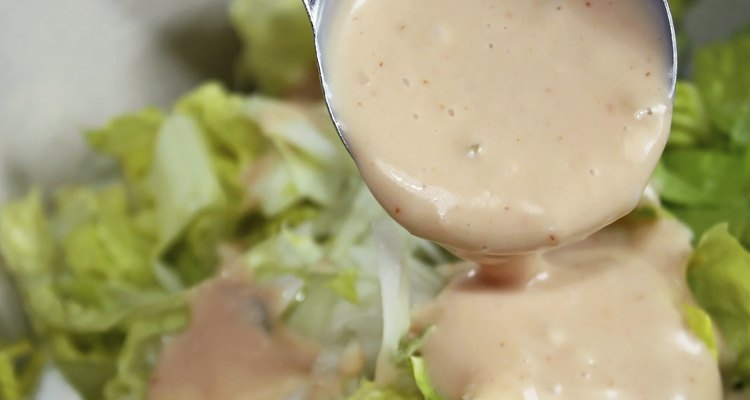
Rena-Marie/iStock/Getty Images
The additive xanthan gum helps thicken certain foods, such as salad dressing. It's also used as an emulsifier to keep foods that naturally separate, such as oil and water, well-mixed. The additive is made when the Xanthomonas campestris bacterium ferments on sugar, creating a gel-like substance. While the U.S. Food and Drug Administration recognizes xanthan gum as safe, some people wish to eliminate food additives from their diets.
Baked Goods
Xanthan gum is a type of sugar called a polysaccharide, and it's added to many commercially prepared baked goods to sweeten the foods. The additive is also an ingredient in certain gluten-free baked goods because it helps to stabilize the ingredients and make them doughy, which is what gluten would normally do. The addition of xanthan gum to gluten-free baked goods enables the ingredients to stick together so the foods can rise, if necessary, and bake normally.
Dairy Foods
Thickened dairy foods might also contain xanthan gum, according to Alistair M. Stephen and Glyn O. Phillips, authors of "Food Polysaccharides and Their Applications." Milk shakes, pudding, custard, whipped cream, yogurt, ice cream and sorbets are examples of some of the dairy foods that might contain xanthan gum. Xanthan gum is also added to these products because it helps manufacturers achieve the creamy texture that consumers want.
Creamy Condiments
Many condiments contain xanthan gum to help achieve a creamy texture or to prevent certain ingredients from separating. For example, many salad dressings contain xanthan gum to help prevent the oil and the acid, usually vinegar, or water from separating as the product is stored on store shelves or in home refrigerators. Mayonnaise is another example, Stephen and Phillips note. Xanthan gum keeps the oil and water from separating, but it also gives the condiment a creamy texture. Certain jams, jellies and sauces, such as gravy, might also contain xanthan gum.
Additional Foods
Some canned meat products, such as pate, might contain xanthan gum to help retain the creamy and thick texture consumers expect. Many powdered beverages contain xanthan gum, as well. The xanthan gum helps to sweeten the beverages and make them easy to mix with water. Pastry fillings and many frozen and ready-to-eat entrees contain xanthan gum, too. If you're determined to nix this additive from your diet, read food labels carefully to find items that don't contain xanthan gum.
Related Articles

How to Make Liquid Sugar Concentrate

Noxzema Ingredients
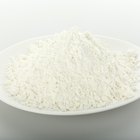
Foods With Calcium Phosphate
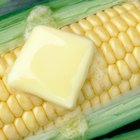
Common Food Emulsifiers

Preservatives in Campbell's Soups

Which Foods Contain Gum Arabic?

How to Cook Tapioca Flour to Make Bread

Can You Make Dumplings With Corn Starch?
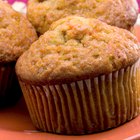
Substitute for Manioc Starch

What Are the Ingredients in Elizabeth ...

Ingredients of Axe Body Wash

Ingredients in Revlon Colorstay Lipstick

Main Ingredients of English Muffins

What Can You Substitute for Oil While ...

What Is Clear Liquid Coconut Oil?

Liquid Smoke Ingredients
How to Bake Cupcakes With Mayo Instead ...

Inert Ingredients for Dove Shampoo
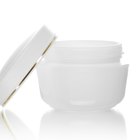
Ponds Dry Skin Cream Ingredients

How to Substitute Dry Milk for ...
References
Writer Bio
Sara Ipatenco has taught writing, health and nutrition. She started writing in 2007 and has been published in Teaching Tolerance magazine. Ipatenco holds a bachelor's degree and a master's degree in education, both from the University of Denver.
Photo Credits
Rena-Marie/iStock/Getty Images